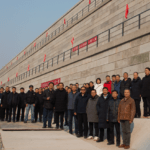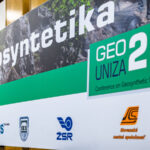Background
Numerous typhoons swept across Taiwan during 2012 and 2013 bringing along abundant rainfall, leading mud flow and flooding to rolling and pouring down along the west side of Dadu Mountain. The torrent was arbitrarily pouring along the main road of Taiwan Boulevard, Taichung City, causing severe inundation to Shalu District located on the west foot of Dadu Mountain. Frequent flooding not only afflicted residents but also further affected the local housing prices. Thus, Taiwanese government initiated to investigate and deal with the drainage problem of Shalu District so as to ensure the security of life and property of Shalu residents.

Problem (Tasks)
Causing the disasters of Shalu District usually resulted from (a) incomplete rehabilitation of partly creeks and rivers (b) earth and stone caused by collapsed slope of Dadu Mountain block the drainage system (c) unconnected up-stream and downstream drainage paths (d) the drainage construction of Shalu District is unable to catch up the speed of regional development (e) because the construction projects on the foot of Dadu Mountain increase rapidly, making impervious areas and the surface runoff increased as well. In order to resolve flooding problem of this district, the government makes plans for drainage treatment on upstream slope while drainage improvement project on down-stream urban area. This construction project included in the treatment plan uses the spare space between bridge piers under the Shalu overpass of the Freeway No.3 located on the slope of Dadu Mountain to construct a detention pond with 1,026m3 volume. The detention pond allows surface runoff to be stored temporarily within it and thus achieves the effect of flood storage; moreover, it is able to reduce flood peak flow produced by rainstorm or delay the arriving time of peak flow, and then decrease flooding condition of low-lying Shalu district downstream during rainy seasons.
ACE Solution
The geology of Dadu Mountain area is laterite on Toukoshan formation which is mainly composed of gravels with high permeability. Considering the influence of water conservation volume caused by water retention facility, land-scape, economy and ecology, the construction utilize local materials, natural granular backfill to form mechanically stabilized earth (MSE) wall as the wall structure around the detention pond. The bottom of detention pond uses RC board of 30 cm thickness as back over to intercept floods on the southern side of detention pond. In addition, this case uses a single-stage reinforced slope with 7.5 m to 8.5 m height, and uses ACEGrid® GG geogrids with 220*110 kN/m tensile strength as reinforced material. Every 4 m vertical height of the reinforced slope lays out light gravel drainage layer of 20 cm thickness with horizontal and vertical ACEDrain S geocomposite drainage panels of 2 m spacing, so that the seepage water in the soil layer behind the slope enables to divert into the pond to release the water pressure and maintain the stability of the long-term reinforced slope. Moreover, the reinforced slope uses durable erosion control bags which are filled with in-situ selected soils and staked on the slope with ACEGrid® GG geogrids wrapping around, allowing the slope to have stable foundation for vegetation and to reach the effects of greening and ecological friendliness.
Result
The detention pond of this case which was finished in 2014 has been attacked by numerous typhoons until now, but it still shows an excellent ability for flood storage. Using mechanically stabilized earth (MSE) on this construction not only fulfills the basic demand of security and economy in civil engineering but also conforms to the current trends of carbon reduction and ecological sustainability pursued by engineering industry. As a result, the constructions of subsequent detention ponds in this district all imitate the design of this case. It is strongly believed that after other drainage improvement and flood detention projects are completed in the Shalu region, Taichung, the flooding status here, will be greatly improved with minimal impact on the environment.
Further Information
For more information about ACE Geosynthetics, visit www.geoace.com or contact sales@geoace.com.






















